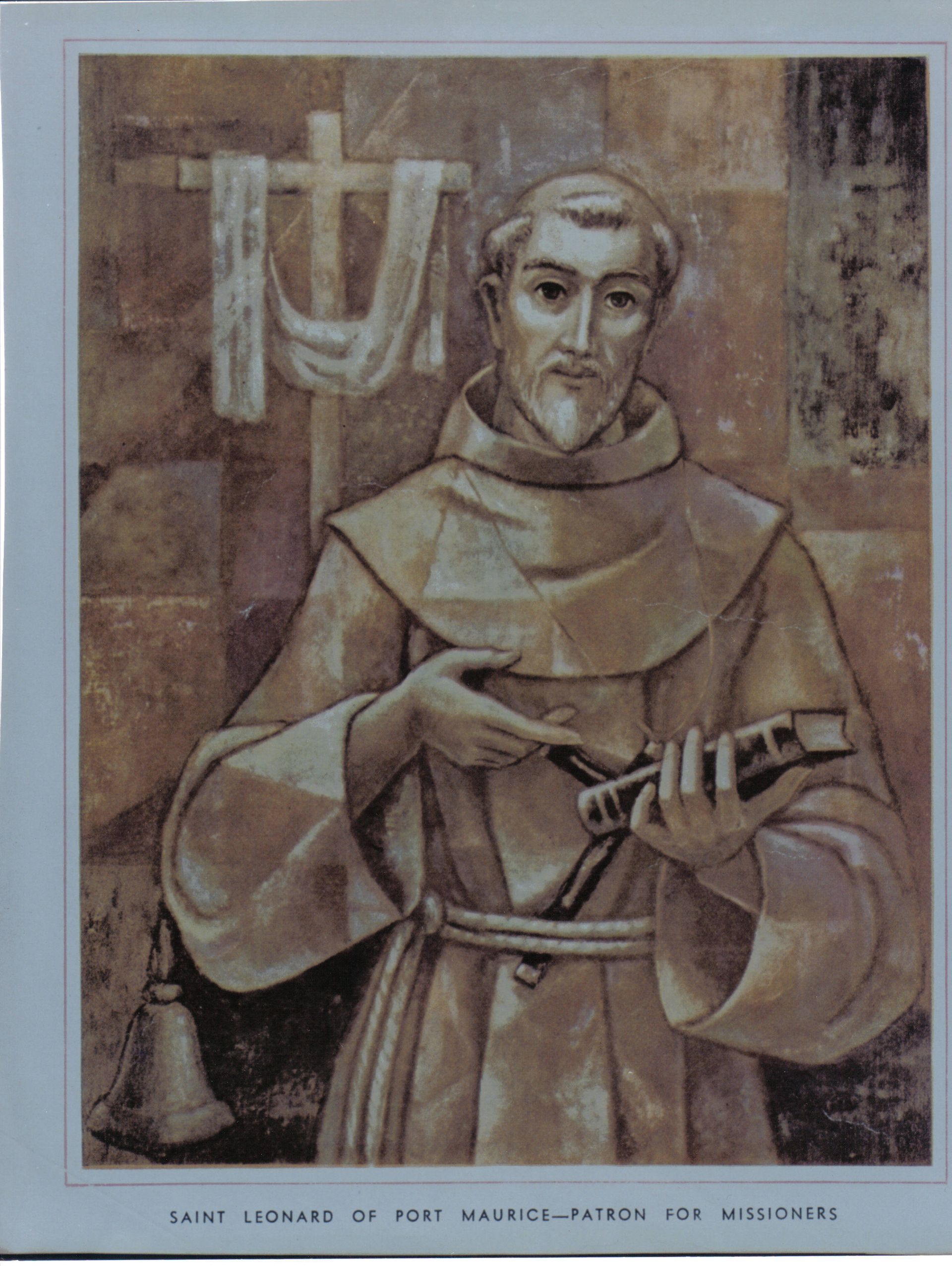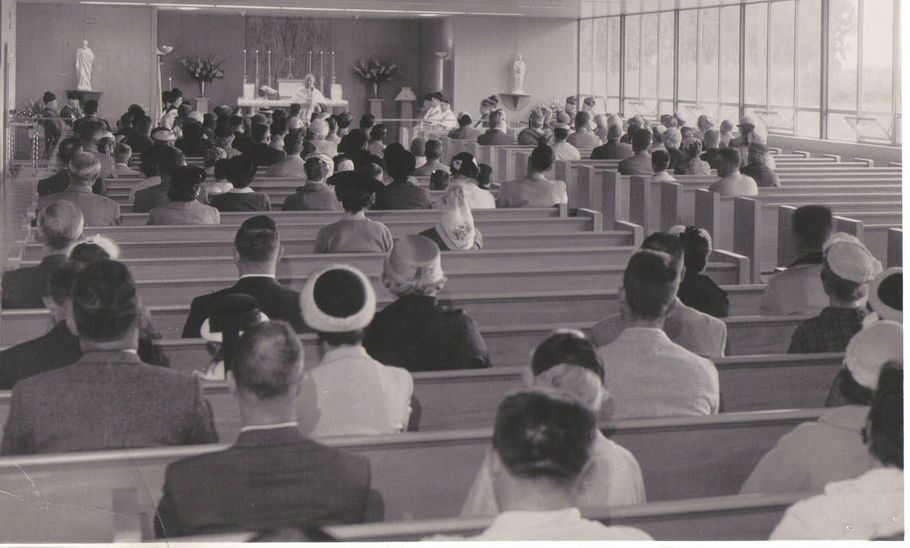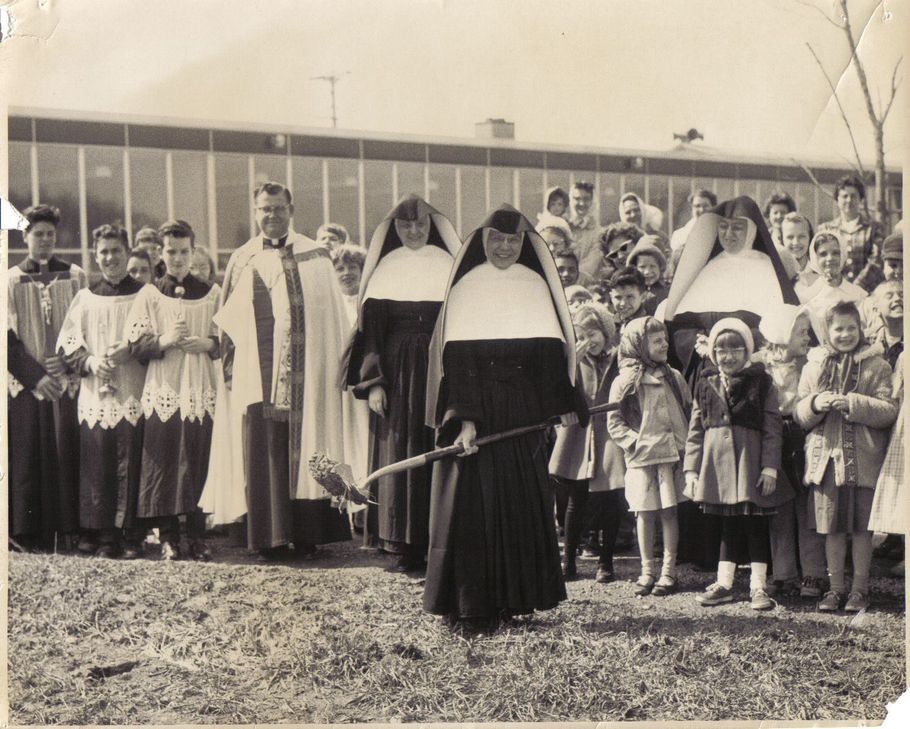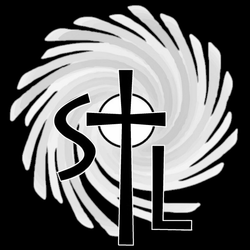About Us
History
A Brief History
In the decades before the 1950's Muskego was primarily a rural community, with most residents living around three cross-road business centers- Durham Hill, Tess Corners and Muskego Center- as well as around area lakes. The small Catholic population attended Mass in neighboring Big Bend, New Berlin, Hales Corners or St. Martins.
The First Five Years
In the late 1950s, as more and more families moved to the area, Fr. Leonard Drewek was asked to establish a parish. St. Leonard Congregation was incorporated on July 17, 1957. Fr. Drewek was appointed the first pastor of the new St. Leonard community by Archbishop Albert G. Meyer.
The parish built a multipurpose building rather than a separate church building, and initially located the church in the space of four un-partitioned classrooms. The entire new building consisted of eight classrooms, the temporary church, a library, a multi-purpose room and a cafeteria.
In September 1960 St. Leonard School opened to grades 1-6. Classes were taught by three School Sisters of Notre Dame and three lay teachers. Grades seven and eight were added later, and eventually grades K3, K4 and K5.
The parish rectory (now the parish offices) was constructed on the north end of our campus in 1959, and the parish convent (now the youth center) was added to the south end in 1962. Parish members performed much of the construction of these two buildings.
More Growth From 1980-Today
In 1979, ground was broken for a new church building and enlarged school facilities, which were dedicated on September 7, 1980, with Bishop Leo Burst officiating.
The 21st century has brought great improvements to our buildings and grounds!
A large gymnasium, concessions kitchen and lobby was added to the southwest corner of the parish complex, west of the school, in 2002.
In 2007 St. Leonard was blessed to celebrate the 50th anniversary of its dedication. With some founding members on hand, the community celebrated all who contributed and continue to be a part of the mission of the building of God’s kingdom in Muskego.
Our welcoming Parish Center was opened in November 2017. Built onto our former church entrance area, the center includes a Gathering Space as well as meeting rooms, a food pantry and our Little Leos Room (child-care formation space for our youngest members during the Sunday 9 a.m. Mass).
Exterior space that remained between the Parish Center and the Parish Offices (former rectory) offered the opportunity to establish a Marian Prayer Garden that was completed and blessed in October 2018.
In May 2020, a crucifix made from a memorial tree was raised in our church and our Risen Christ from the front of church was placed in our Gathering Space.
We improved our chapel and renamed it the Divine Mercy Chapel on Divine Mercy Sunday in April 2022.
We hope and pray St. Leonard can continue make disciples of Jesus and feed their faith, for many years to come!
Our Pastors
- Fr. Leonard Drewek, 1957-1976
- Fr. Joseph Sukup, 1976-1986
- Fr. Kenneth Derfus, 1986-1995
- Fr. Jerome Rinzel, 1995-2005
- Fr. William Kohler, 2005-2012
- Fr. Daniel Janasik, 2012-2025
- Fr. Patrick O'Loughlin, present
St. Leonard of Port Maurice

St. Leonard of Port Maurice (1676-1751)
Paulo Girolamo Casanova was born at Port Maurice on the Italian Riviera on December 20, 1676. His father was a mariner. As a teenager, he was sent to the Jesuit College in Rome to study philosophy and literature. During this time, he became aware of his religious vocation and was drawn to the austerity of the Franciscan Order. At this time he was living with a wealthy uncle who wanted him to become a physician. He objected to this vocation and turned him out of the house. Paulo (St. Leonard) managed to find another relative to live with.
When he joined the Franciscan novitiate, he took the name Leonard. He was ordained a priest in 1702. In 1709 he was sent to a monastery in Florence to bring about reform and rededication to a life of poverty. He was successful and the community grew and became an important religious center. He was increasingly invited to preach in surrounding areas. In 1736, he was sent to Rome, which became his final center of ministry. While he was the superior of the San Bonaventura community in Rome, he preached with good results to soldiers, sailors, convicts and galley slaves. He was sent out on preaching missions which often attracted such huge crowds that he had to move out of the town’s church and preach in the open air. One of his favorite “preaching aids” was the Stations of the Cross. That the devotion spread is due largely to him.
In 1744, Pope Benedict XIV sent him to the Island of Corsica where religion was neglected and civil order in general had broken down. This was a mission impossible! He was regarded by many of the Corsicans as an agent of the rulers in Genoa, whom they despised. He was received with hostility. Men often would come to his preaching missions with their guns. The fatigue, intrigues and constant need to be vigilant began to affect his health. At the end of six months, he was so ill that a ship was sent from Genoa to take him home. He returned to Rome and continued his work of preaching there.
In the jubilee year of 1750, with the Pope’s approval, he set up the Stations of the Cross in the Coliseum. He continued his preaching missions. Because of his success, the pope sent him off to other areas of Italy. Again, he was met with hostility or indifference in some areas and these later missions were largely unsuccessful. In November of 1751, he set out in a carriage to return to Rome. The carriage broke down in Spoleto. So he continued on foot to Rome– as the crow flies, a 60-mile journey. He arrived at his monastery of San Bonaventura on November 26, fatigued and sick. He was carried to bed and received Anointing of the Sick. An affectionate message arrived at 9 p.m. from the Pope. By midnight he was dead. His legacy was to spread the devotion of the Stations of the Cross, which had become widely popular because of his preaching.
Relics In the Altar
Altars in Catholic Churches have what are called"Altar Stones." The relics of at least two saints, at least one of which had to be a martyr, were inserted in a cavity in the altar which was then sealed- this was meant to recall the use of martyrs' tombs as places of Eucharistic celebration during the persecutions of the Church in the Roman Empire in the first through third centuries. A typical misunderstanding of Catholics is that the relics of the saint in the altar stone are the relics of the patron saint of the parish church. Thus, people might expect that the relics of St. Leonard are in our altar stone. That is not the case. Altar stones usually contain the relics of early Christian martyrs.
The documents attached to our church altar stone name the relics as those of Saints Laetus and Modestinus. Who are they?
St. Laetus died in 553. He is a priest honored in Orleans, France. His relics are enshrined in St. Lie. His feast day is November 5.
There are 8 Saints “Modestus.” Some of them are listed here.
- Feastday: February 12. He is venerated as the patron saint of Cartagena in Spain. He was martyred at Carthage about 160.
- Feastday: February 12. He was a Martyr who died in Alexandria, Egypt. The date of martyrdom is unknown. Nothing is known about him.
- Feastday: February 12. He is a deacon, said to have been a native of Sardinia. He was martyred under Emperor Diocletian about 304.
- Feastday: February 24. He was bishop of Trier during the period of Frankish rule over the area from 486. His relics are enshrined in St. Matthias, Trier. Modestus suffered much during that difficult era. d.489.
- Feastday: February 5. He was a Benedictine bishop, trained by St. Virgilius in Salzburg, Austria. He became regionary bishop of Carinthia, modern Austria, and evangelized the region. He died in 722.




